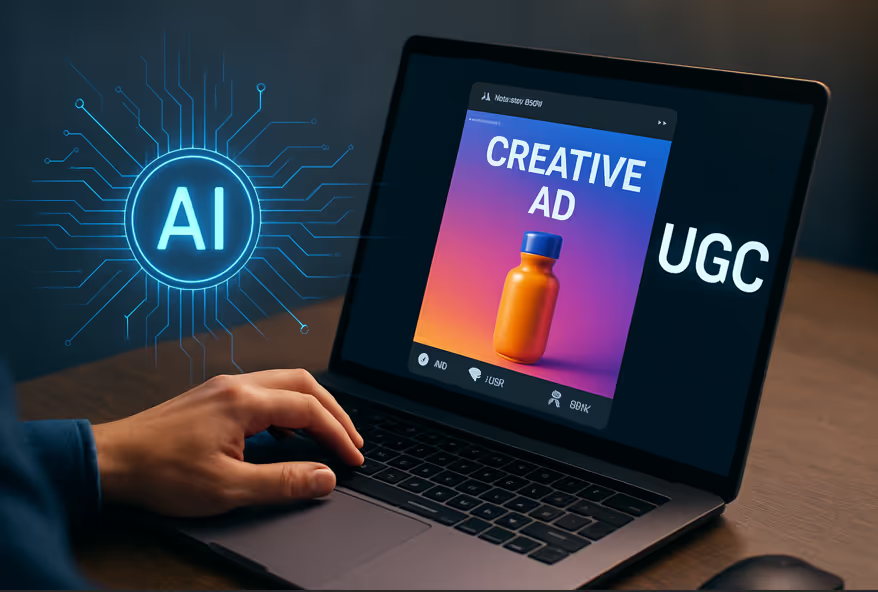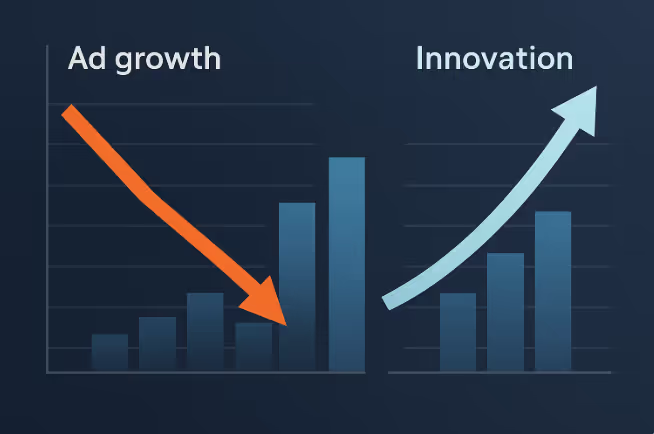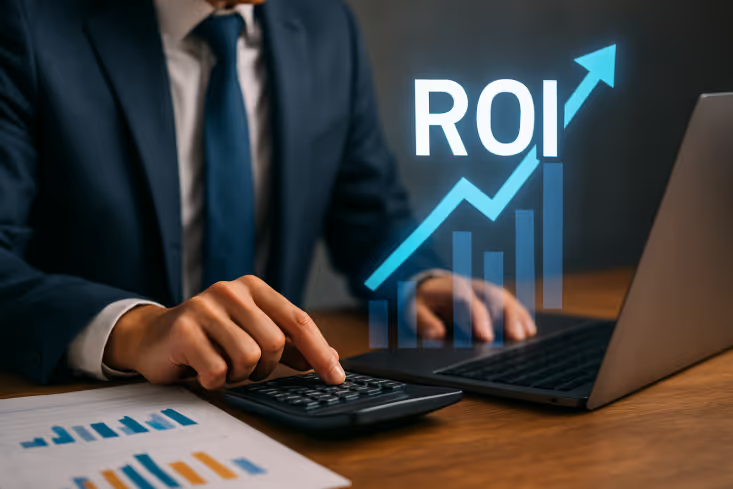Stay informed with our newsletter.
.webp)

.webp)

As global ad spend growth slows to around 6% in 2025 due to economic uncertainty and ROI pressures, brands are reallocating budgets toward more agile, results-driven strategies. User-generated content (UGC), AI-powered campaigns, and performance media are emerging as key winners, offering scalability, authenticity, and personalized engagement. This shift signals a new era of advertising where creator-led content, smart automation, and data-driven performance converge to drive deeper connections and better outcomes across digital channels.

Despite signs of recovery in the global economy, the advertising industry is entering a cautious phase. Industry giants WPP and GroupM recently adjusted their global ad growth forecasts to approximately 6% for 2025, down from more optimistic estimates earlier in the year. The reason? A combination of macroeconomic fragmentation, shifting ROI expectations, and a fundamental evolution in how and where brands connect with audiences.
But not all is slowing down. While traditional ad spend growth decelerates, two key trends are gaining serious momentum: AI-driven campaigns and User-Generated Content (UGC). In fact, these forces are not just surviving, they’re thriving.
So where exactly is the money going, and what should marketers do next?
WPP and GroupM’s revised outlook reflects a reality many marketers already feel: budgets are tighter, scrutiny on ROI is sharper, and brand loyalty is harder to earn. Fragmentation in both global economies and media consumption habits means advertisers must stretch every dollar further.

But behind the caution is a clear signal: advertisers are not pulling back altogether, they're reallocating. The winners in this new media economy are the platforms and strategies that offer:
This is where AI and UGC step into the spotlight.
User-generated content is no longer a “nice to have.” It’s central to how consumers discover, evaluate, and trust brands, particularly among Gen Z and Millennials. These generations have grown up with influencer culture and peer reviews, placing more value on authentic experiences than polished, top-down advertising.
According to Nielsen, UGC is 2.4x more trusted than brand-created content. TikTok, Instagram Reels, and YouTube Shorts have only amplified this trust loop, turning everyday users into powerful micro-ambassadors.
But simply reposting customer content isn’t enough. Leading brands are building entire campaign ecosystems around creators, with structured programs that reward participation, generate feedback loops, and turn audiences into brand partners.
Your move: Develop always-on UGC strategies. Use platforms like TikTok Creator Marketplace or Instagram’s Collab tools to tap into communities at scale. Create frictionless ways for fans to participate, think challenges, duets, or testimonial invites.
Artificial Intelligence is rapidly transforming how campaigns are created, optimized, and personalized. From AI-written copy to synthetic media and predictive targeting, AI is making advertising more efficient and in many cases, more effective.
Brands like Coca-Cola and Heinz have already launched high-profile campaigns created partially or fully by AI, from generating visuals to optimizing ad copy variations in real-time. Meanwhile, startups and DTC brands are using generative AI tools like Midjourney, ChatGPT, and Runway to create ad assets in hours, not weeks.
As privacy changes limit the effectiveness of traditional targeting, AI’s predictive capabilities are becoming a competitive edge, allowing brands to make smarter bets with less data.
Your move: Invest in creative AI tools that align with your brand’s voice and quality standards. Build workflows that allow marketers to test dozens of creative variations quickly and use real-time analytics to back your winners.
In a low-growth environment, performance marketing continues to dominate budget allocations. Advertisers are gravitating toward measurable, outcome-driven channels like search, social commerce, programmatic display, and retail media networks.

This shift favors platforms that can track ROI, prove conversions, and optimize in-flight, but the bar is getting higher. Consumers expect relevance, not repetition. Static banner ads no longer cut it.
That’s why pairing performance media with AI personalization and UGC creative is becoming a winning formula. The emotional resonance of creator content, paired with the precision of AI targeting and media buying, delivers both engagement and conversion.
Your move: Blend performance and brand marketing. Use creator-driven content as your media assets in paid campaigns, then layer on AI for real-time performance optimization. Don’t silo your creative and media teams, they must work in sync.
The future of advertising isn’t about choosing between AI or humans, brand or performance, awareness or conversion. It’s about integration. The most resilient marketers in 2025 will be those who:
This new model - creator-powered, AI-fueled, and performance-driven is more cost-effective, more scalable, and more aligned with how people actually consume content today.
As ad spend softens, the knee-jerk reaction might be to cut budgets or retreat to “safe” channels. But the smarter move is to double down on what works now: the voices of real people, the intelligence of machines, and the proof points that earn conversions.
The best campaigns in 2025 won’t necessarily be the loudest, they’ll be the most relevant, most relatable, and most responsive.
Let creators co-author your brand story. Let AI be your co-pilot in speed and scale. And let performance guide your path.
Because while the dollars may be slowing, the opportunity to connect has never been faster.
For questions or comments write to contactus@bostonbrandmedia.com
